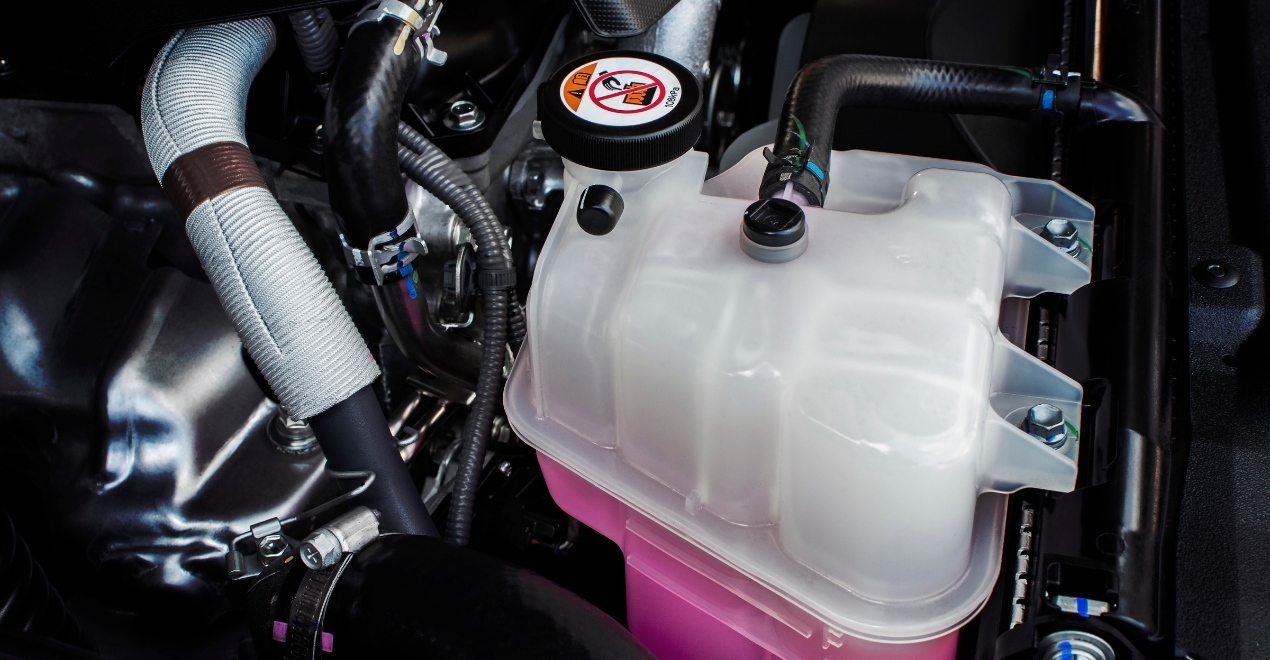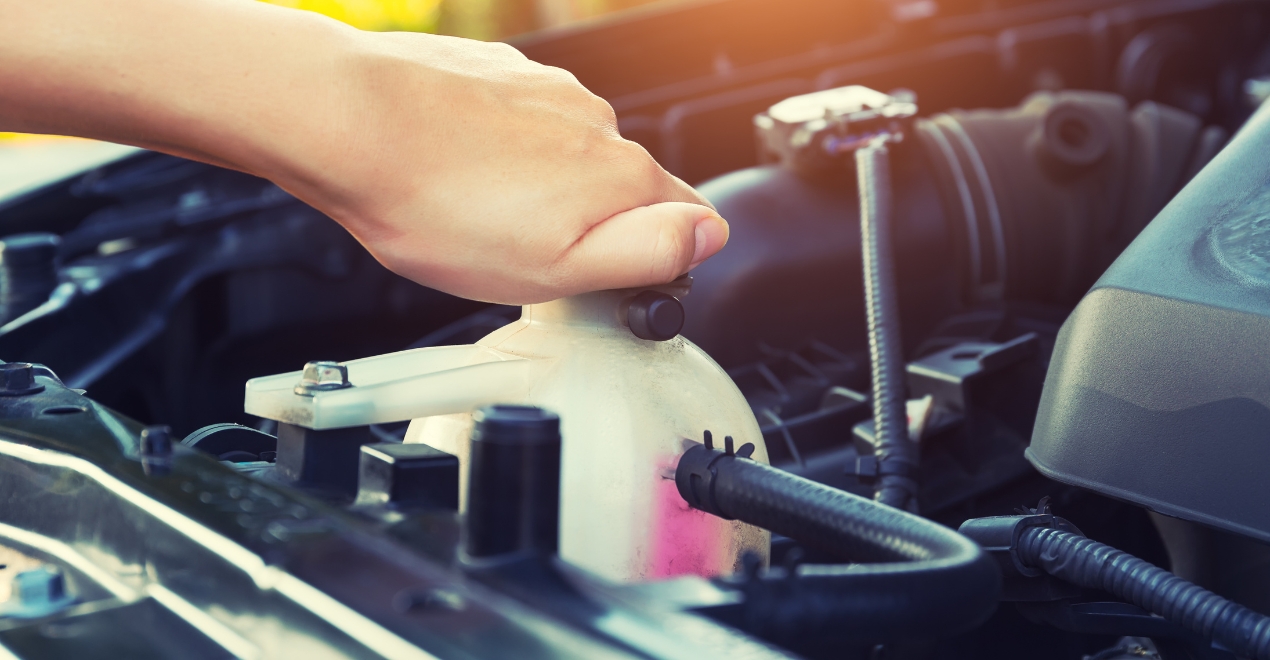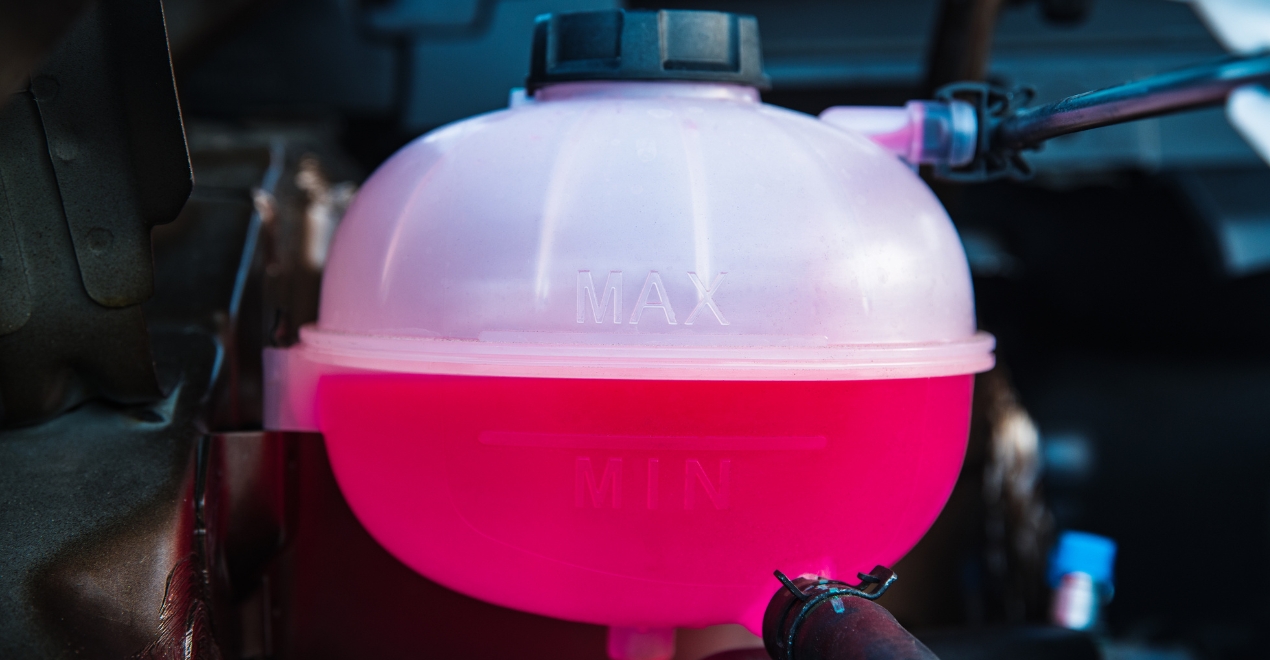Your car’s engine is a hardworking machine, constantly generating heat through combustion. To prevent overheating and ensure optimal performance, a vital cooling system circulates a mixture of water and coolant throughout the engine block and radiator. But with various coolant types and colors available, choosing the right one for your car can be confusing. Fear not, fellow motorist! This comprehensive guide will equip you with the knowledge to navigate the world of coolants and select the perfect one for your vehicle. Ready to ensure your car runs smoothly? Discover the right coolant for your vehicle and keep it in top condition. And if you ever need reliable car repair services, remember to call Crossroads Helpline!
Understanding the ABCs of Coolant: Antifreeze and Beyond

Coolant, often referred to as antifreeze, plays a crucial role in your car’s cooling system beyond just preventing freezing during colder months. A quality coolant performs several essential functions:
-
Temperature Regulation: The primary function of coolant is to absorb heat from the engine and transfer it to the radiator, where it can be dissipated into the airflow. This prevents the engine from overheating, which can lead to serious damage.
-
Corrosion Protection: The coolant contains anti-corrosion additives that protect the metal components of your engine’s cooling system from rust and deterioration. These additives form a protective layer on metal surfaces, ensuring long-term system functionality.
-
Lubrication: Coolant provides a light lubricating effect on the water pump and thermostat, minimizing friction and wear on these critical components.
-
Increased Boiling Point: Water boils at 100°C (212°F) under standard atmospheric pressure. By mixing coolant with water, the boiling point of the mixture is elevated, providing a buffer against overheating during periods of high engine load or extreme ambient temperatures.
-
Lower Freezing Point: During colder months, coolant prevents the cooling system fluid from freezing, which can cause the radiator and engine block to crack. The specific freezing point of the coolant mixture determines the level of winter protection offered.
With these crucial functions in mind, it’s clear that choosing the right coolant goes beyond just picking a color. Let’s delve deeper into the different types of coolant available.
Coolant Types: Decoding the Alphabet Soup
The automotive industry utilizes different coolant technologies, each identified by a specific letter designation. Here’s a breakdown of the most common coolant types:
-
IAT (Inorganic Acidic Technology): This traditional coolant type has been used for decades and is often green or yellow in color. IAT coolants rely on phosphates and silicates for corrosion protection. However, these additives can break down over time and become less effective. Additionally, IAT coolants typically require more frequent replacement (every 2-3 years) compared to newer technologies.
-
OAT (Organic Acid Technology): OAT coolants are a longer-lasting alternative to IAT coolants. They utilize organic acid additives for corrosion protection, providing extended service life (up to 5 years or longer). OAT coolants are typically orange or pink in color and are compatible with aluminum components commonly found in modern engines. However, OAT coolants can be more expensive than IAT coolants.
Beyond the Basics: HOAT and P-HOAT Coolants

As engine technology evolves, so do coolant formulations. Here we explore two more advanced coolant types:
-
HOAT (Hybrid Organic Acid Technology): HOAT coolants combine elements of both IAT and OAT technologies. They utilize a hybrid mixture of organic acids and inhibitors for corrosion protection. HOAT coolants offer extended service life (typically 5 years or longer) and compatibility with a wider range of metals found in modern engines, including aluminum and cast iron. HOAT coolants are often yellow or gold in color and can be a good choice for vehicles with a mix of older and newer engine components.
-
P-HOAT (Phosphate Hybrid Organic Acid Technology): P-HOAT coolants are a variation of HOAT coolants that reintroduce a low level of phosphates for enhanced corrosion protection for specific engine needs. These coolants are typically pink or blue in color and might be recommended for certain European or Asian vehicles.
Important Note: Mixing different coolant types is generally not recommended as it can lead to chemical reactions that can negatively impact the cooling system’s performance and corrosion protection. Always refer to your vehicle’s owner’s manual for the specific coolant type recommended by the manufacturer.
Coolant Color: A Misleading Guide
While coolant colors might seem like a convenient way to identify the type, it’s important to remember that color is not a reliable indicator of coolant composition. The same color coolant can be formulated with different technologies by various manufacturers. Always check the coolant’s label or manufacturer’s specifications to be certain of its composition and compatibility with your vehicle.
Choosing the Right Coolant for Your Car: Knowledge is Power

Now that we’ve explored the different coolant types, how do you choose the right one for your car? Here are some key considerations:
-
Vehicle Manufacturer Recommendation: The owner’s manual is your first point of reference. The manufacturer specifies the coolant type specifically formulated for your vehicle’s engine and cooling system materials. Using the recommended coolant ensures optimal performance and compatibility.
-
Coolant Technology: If your owner’s manual doesn’t specify a particular coolant technology (IAT, OAT, HOAT, or P-HOAT), consider the age of your vehicle and the materials used in the cooling system. For older vehicles with predominantly iron blocks and radiators, an IAT or HOAT coolant might be suitable. For modern vehicles with aluminum components, an OAT or P-HOAT coolant is generally recommended due to its superior compatibility and longer service life.
-
Coolant Maintenance: Regardless of the coolant type you choose, regular maintenance is crucial. Coolant deteriorates over time, losing its corrosion protection properties and becoming less effective at regulating temperature.
Finding the Right Coolant: Beyond the Basics
Here’s how to navigate finding the right coolant for your specific situation:
-
Consult Online Resources: Several online resources can help you identify the correct coolant for your vehicle. Manufacturer websites often have vehicle lookup tools that specify the recommended coolant type based on your car’s make, model, and year. Additionally, automotive parts retailers might have compatibility charts that match coolant types to specific vehicles. Remember to use these resources as a starting point and always verify the information with your owner’s manual.
-
Contact Your Dealership or Repair Shop: The service department at your vehicle’s dealership or a trusted repair shop can be a valuable source of information. They can access manufacturer databases and recommend the correct coolant for your car. Additionally, they might offer coolant flushing and replacement services if you’re not comfortable performing the maintenance yourself.
-
Read the Coolant Label Carefully: When purchasing coolant, always read the label thoroughly. The label should specify the coolant technology (IAT, OAT, HOAT, or P-HOAT), the recommended mixture ratio with water (a 50/50 mix is common for most climates), and the compatibility information. Look for manufacturers that meet industry standards like ASTM (American Society for Testing and Materials) or British Standard BS6566.
DIY Coolant Change or Professional Service?
The decision of whether to change your coolant yourself or take your car to a professional depends on your comfort level and mechanical skills. Here’s a breakdown of each approach:
-
DIY Coolant Change: If you’re comfortable with basic car maintenance, changing your coolant can be a relatively straightforward process. Several online tutorials and your vehicle’s service manual can guide you through the steps involved. However, it’s important to properly dispose of used coolant, as it can be hazardous to the environment. Consult your local recycling center for proper disposal options.
-
Professional Coolant Flush and Replacement: Taking your car to a qualified mechanic ensures a thorough coolant flush and replacement. Professionals have the tools and expertise to properly drain the old coolant from the entire cooling system, including the radiator and engine block. This ensures that no contaminated coolant remains mixed with the fresh coolant, maximizing its effectiveness.
The Importance of Regular Coolant Maintenance
Regular coolant maintenance is an essential aspect of preventative car care. Here’s why it matters:
-
Prevents Overheating: Deteriorated coolant loses its ability to absorb heat efficiently, increasing the risk of your engine overheating. Overheating can lead to serious engine damage, resulting in costly repairs.
-
Protects Against Corrosion: Coolant additives form a protective layer on the metal components of your cooling system, preventing rust and corrosion. Neglecting coolant changes leaves these components vulnerable to deterioration and potential failure.
Conclusion: Keeping Your Cool: A Final Word on Coolant Care
By understanding the different coolant types, selecting the right one for your vehicle, and performing regular maintenance, you can ensure your car’s cooling system functions optimally. Remember:
-
Consult your owner’s manual. It remains the ultimate source of truth for your specific vehicle’s coolant requirements.
-
Don’t Mix Coolant Types: Mixing different coolant chemistries can compromise the cooling system’s performance and lead to corrosion issues.
-
Prioritize Regular Maintenance: Replacing coolant at the recommended intervals is crucial for preventing overheating and ensuring long-term engine health.
-
Safety First: When handling coolant, wear protective gloves and eyewear, as it can be irritating to skin and eyes. Dispose of used coolant responsibly at designated recycling centers.
By following these guidelines, you can keep your cool (literally and figuratively) on the road and enjoy trouble-free miles with your car.

